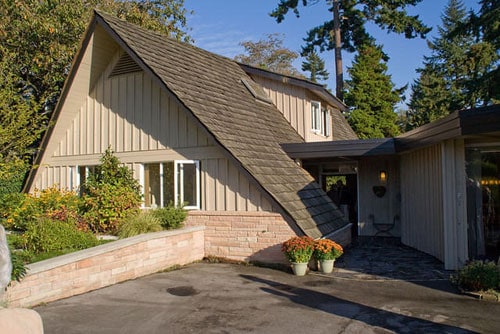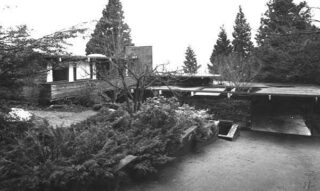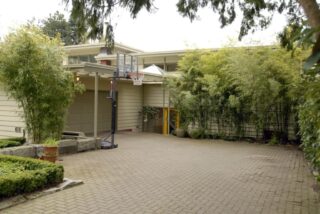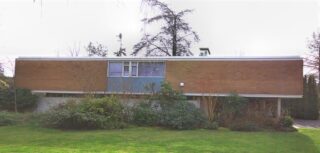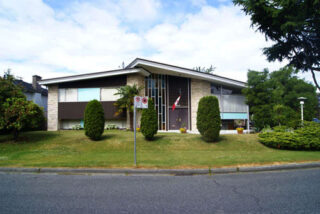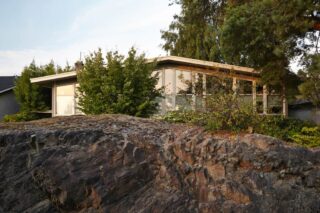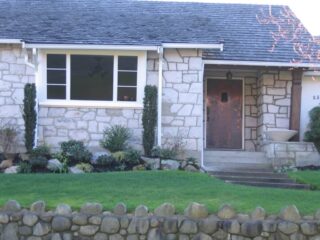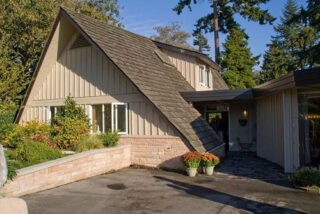Exposed wood on the ceiling plane matches the posts and beams. Wood planking penetrates the glazing to run out on the underside of the eaves and if the interior walls have planking the same detail appears on the outside of thin walls. Exteriors are usually wood siding or shingle or stucco with robust wood trim. Roofs can be tar and gravel if low pitched or flat. Cedar shake or shingle as well as asphalt appear on steeper pitched roofs.
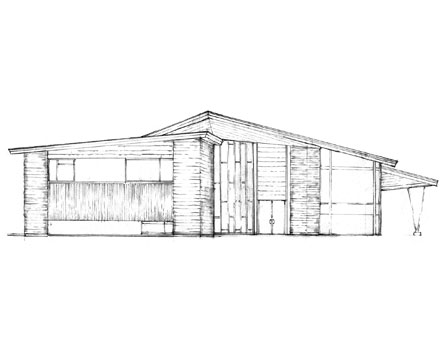
Click on the diagram or expand the term index to learn more about the features.
Cladding
Also referred to as siding, cladding is the outermost layer of the wall system, providing resistance to the natural elements and acting as a control device for drainage. Depending on the house style, various kinds of stucco, horizontal and vertical boards may be used as cladding. Types of cladding/siding: Board and Batten Clapboard Drop Lap Masonry Shakes Shingle Shiplap Stucco
Clerestory
A row of windows located near the top of the wall or touching the ceiling. A distinguishing feature of mid-century architecture.
Decorative Glazing
Stained, beveled, or leaded glass glazing that is separated by “cames” (slender grooved bars of lead) and which appears in windows and doors.
Masonry Cladding
A type of siding, the material of which consists of stone, brick, or construction block.
Form
West Coast Modern homes are simple, undecorated houses set at ground level with flat or low-pitched roofs that might contain a clerestorey. They have deep eaves and often open ceilings with exposed post-and-beam structure. Facades tend to be divided into panels of windows and stucco and wood, including plywood. Although some present an almost blank facade to the street, they typically have a seamless transition between interior space and garden, or wrap around a courtyard at the back.
Background
The West Coast Modern style developed from a modernist approach to suburban living and a rainforest climate. The style first appeared in Vancouver, Seattle and Portland in the 1930s. Architects in these regions drew inspiration from Frank Lloyd Wright’s architecture, the International Style, and Japanese residential design. They incorporated these elements into designs that responded to the climate, terrain and rainforest setting in which they worked. The result was a style of building, primarily domestic, with a close relationship to their individual sites. Some West Coast Modern buildings are built dramatically on the edges of cliffs. Others are close to the garden. They vary in shape and size but share principles of design.
Details
- Flat or low-pitched roofs that might contain clerestorey windows
- Set at ground level
- Simple and undecorated houses
- Deep eaves
- Facades divided into panels of windows
- Stucco and wood siding
- Often open ceilings with exposed post-and-beam structure
